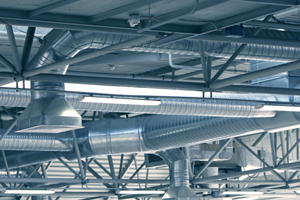 RTP provides a wide range of indoor air quality
services. These include surveys to help resolve complaints
raised by employees who may be suffering building-related
symptoms such as respiratory distressed allergic reactions
more than usual colds and comfort-related complaints such as too
hot, too cold
or too dry. RTP provides a wide range of indoor air quality
services. These include surveys to help resolve complaints
raised by employees who may be suffering building-related
symptoms such as respiratory distressed allergic reactions
more than usual colds and comfort-related complaints such as too
hot, too cold
or too dry.
RTP can assist you with any number of indoor air quality
issues. As noted above, activities associated with indoor
air are often initiated in response to complaints from inhabitants
of the space. RTP has a number of experts that can provide
guidance for determining potential patterns to complaints and
appropriate recordkeeping actions. Once initial
troubleshooting and analysis is complete, RTP’s team of
environmental professionals will help to determine and develop the
most cost-effective and useful sampling protocol, if
necessary. RTP uses sampling methods
approved by regulatory agencies and the AIHA to provide
information on levels of mold, spores and bacteria
or air toxins
which can create conditions under which discomfort and
complaints can arise. RTP also records ambient conditions such as
temperature, humidity and carbon dioxide levels. These
are indicators that can relate to problems in buildings.
The CO2 level is an indicator as to
adequacy of fresh air supply. Inadequate fresh air is a
leading cause of indoor air quality problems since lack of fresh
air can allow concentrations of mold, spores, bacteria, and
toxic substances to increase to levels that can be annoying or
dangerous.
RTP project experience shows that solutions are
sometimes as
simple as increasing the ratio of fresh air to a building space
by adjusting damper settings. Other times, solutions are more complex, requiring the
r-balancing of
HVAC systems, cleaning ducts, replacing filters, and other maintenance
fixes. If an outside environmental factor is found to be at
fault, RTP can recommend a solution based on our years of
environmental experience.
RTP can also assist with negotiations with landlords, building
maintenance representatives and others, as necessary.
|